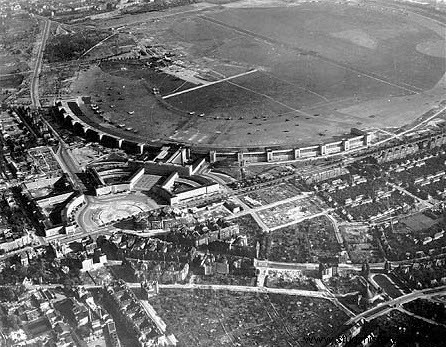After World War I, Germany lost the possibility of developing an air force due to the restrictions imposed by the Treaty of Versailles. The treaty went further, preventing Germany from owning or even building planes for civilian use. Although Germany illegally avoided the ban thanks to the Rapallo treaty with the Soviet Union, which allowed it to have bases on Soviet soil for the development of prohibited weapons, the Nazis had to work hard to bring German aviation to the level of that of the Soviet Union. other world powers.

In 1934 and under the supervision of Alber Speer, the new Tempelhof terminal was inaugurated, which made the small Berlin airport a benchmark for other world capitals. This airport was the scene of major events, such as the 1936 Olympics or the 1948-49 West Berlin airlift. Fighter planes were built in the basements of the terminal during the war.

The building, which is shaped like an eagle with its wings spread, was the city's main airport until its final closure in 2008. The runways are now a public park and the terminal is used as a space for events.
How to get to Tempelhof Airport
Depending on whether you want to go to the Tempelhof park or visit the terminal, we must go to different places. For the park the nearest stop is Tempelhof from the S-bahn lines S41 and S42. For the terminal, we must take the underground line U6 to the Platz stop of the Luftbrücke. To know the best combination to arrive you can consult the following LINK.
Time to visit Tempelhof
Tempelhof Park is open from dawn to dusk and is free to enter.
To visit the old airport terminal it is necessary to do it on a guided tour. They are only available in German and English. To know the schedules of the guided tours you can consult the following LINK.
Visit the interior of the Tempelhof terminal
Tempelhof Park is a huge green expanse where the runways are still preserved. It is a good place to go with a bicycle to be able to enjoy its maximum extension. Around the runways there are various explanatory panels about the old airport.
The guided visits to the interior of the installation have different themes, from a general visit to themed visits about the 1948-49 airlift or through hidden places of the installations.

